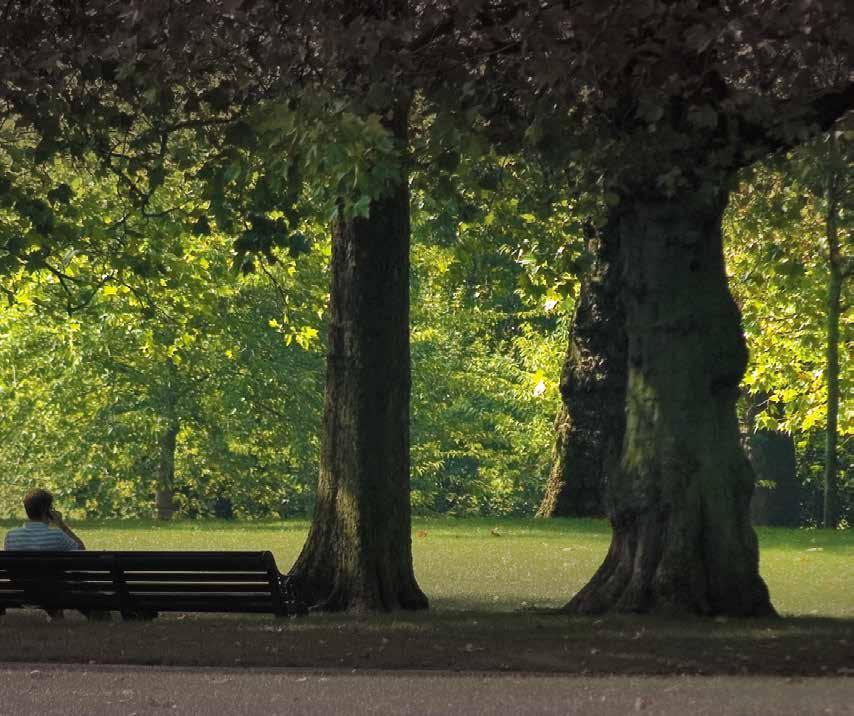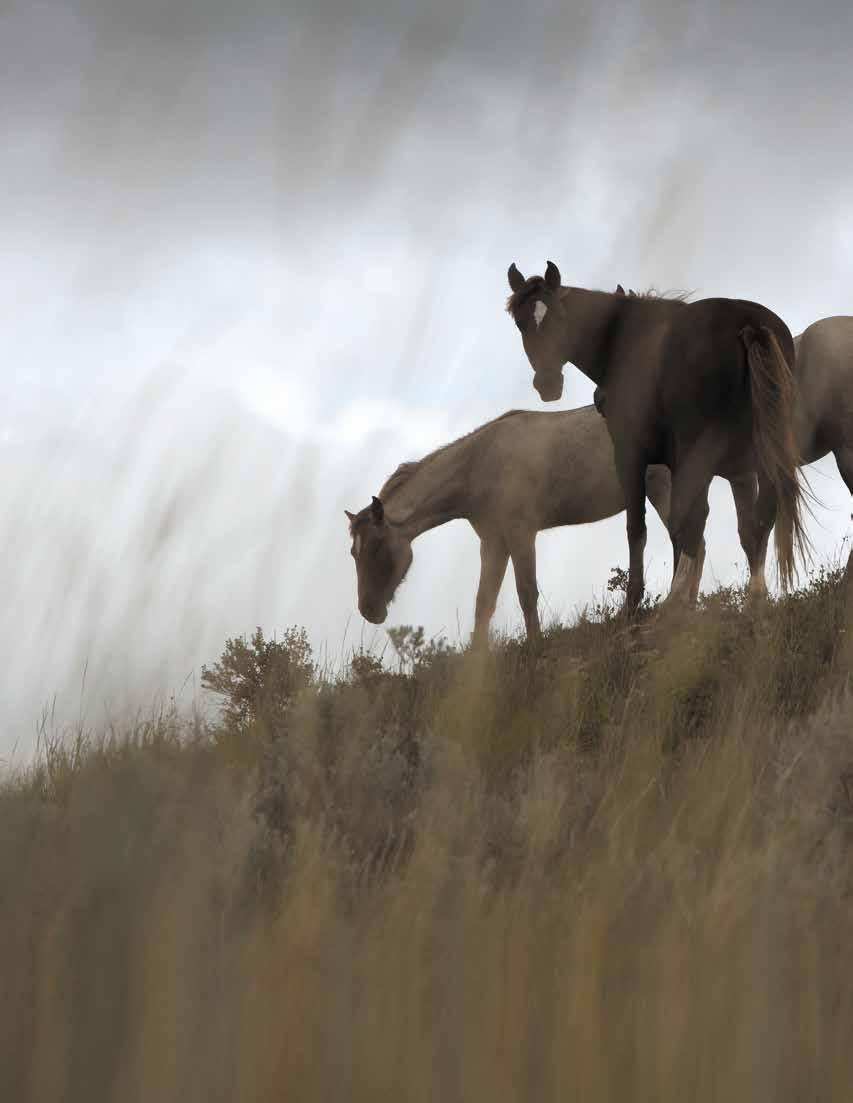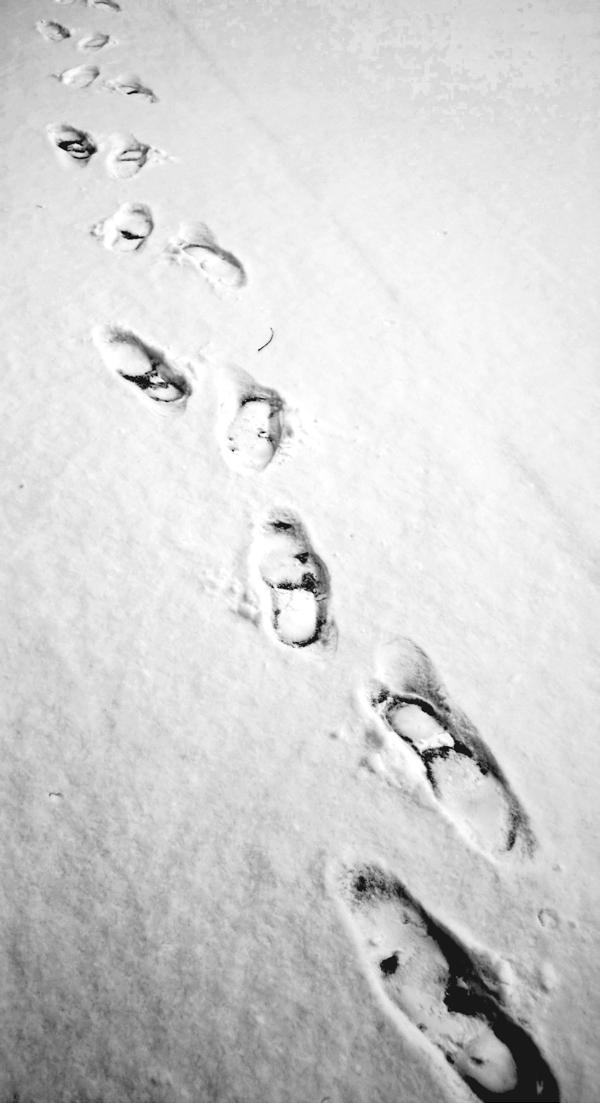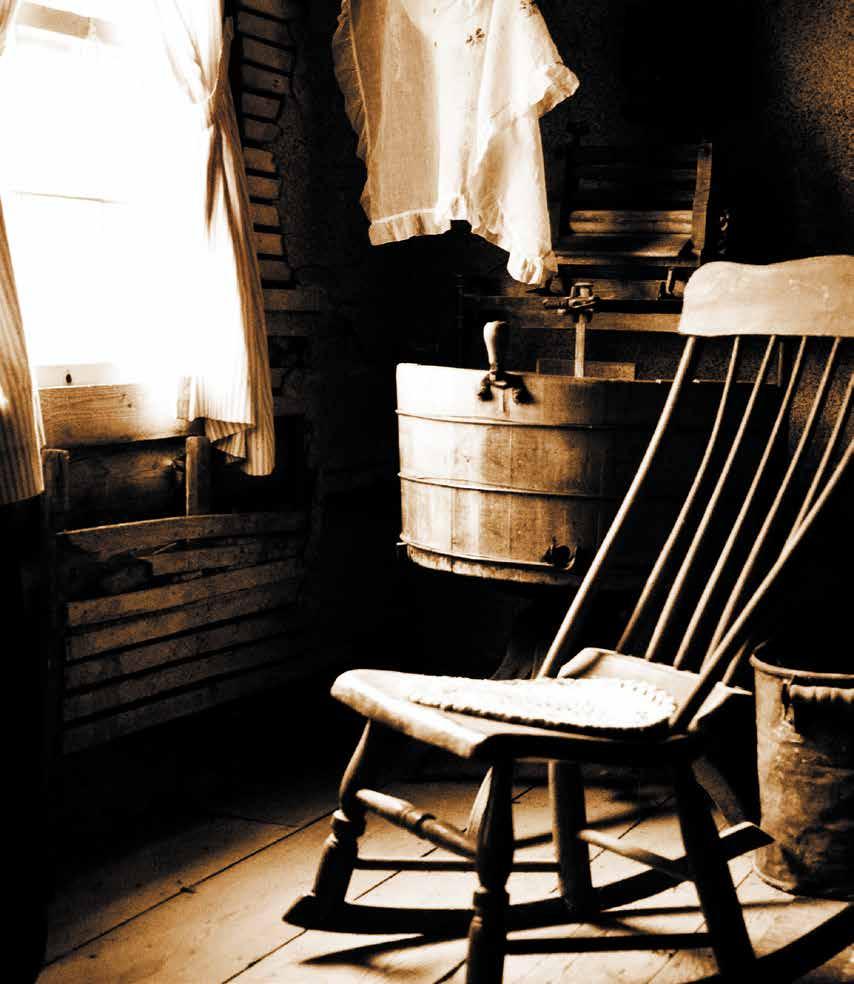
10 minute read
Your Sense of Place is Your Sixth Sense
By Jay Basquiat
In the spirit of the philosopher Immanuel Kant, gibed as the greatest armchair geographer since he never left his hometown while authoritatively musing on geographical matters, let’s take a journey using our geographical imaginations. Under the guise of pheasant hunting, we stop along the western edge of a promising tree row on P.L.O.T.S. land (Private Land Open to Sportsmen) near a small western North Dakota town. Pushing northeast we walk the tree row, ending at the remains of an old stone house and a barn foundation. Closer inspection reveals craftsmanship and industry: the stone structure is local sandstone stacked and mortared with a mix of mud, straw, and sand. A bit of the fireplace remains, and the mind conjures warmth, the smell of stew, wet woolen mittens drying. The eastern orientation of the farmstead overlooks a small valley with a water source, a world of exploration for the children that probably lived here and perfect for grazing sheep or cattle. The land still shows signs of grazing. These folks are gone now as is their sense of this place, but a new feature imposes its place here: just across the valley to the east is a giant coal mine.
Advertisement
At journey’s end I ask you, “What is your sense of this place?” What feeling or perception or feature will you privilege in your account? This is a complicated place and therefore a complicated question: this is rural North Dakota; the land is connected to a public program (PLOTS); we hunted here; some other people lived their lives here, crafting a home and a living from the land; someone still uses this land for cattle grazing; coal industry uses this place; time moves each perception through the unknown past reimagined in the mind’s eye through the ever elusive present on into an open, uncertain future. You and I, though seeing roughly the same features, perceive this place through different lenses of our individual history, awareness, and experiences. All this in just one place!
Our geographic journey yields some good data for the consideration of what a place is. In the field of human or cultural geography, the concept of place may be defined as a center of meaning for people at any scale. Though helpful, our understanding might be further aided by the consideration of five words as they relate to the nature of place: places are 1) constructed, 2) changing, 3) complexes, 4) contested, and 5) constitutive. Unpacking these features of place will help us understand the nature of our geographical being: how we form places and a sense of place and how places form us.
First, places are constructions with both material and nonmaterial dimensions. Observing material qualities and lived practices yields some idea of a place. The smell of manure, the sight of a rotary milker and people wearing muck boots, the sounds of a herd of holsteins or jerseys pressing at the gate are all good indicators that the place is a working dairy farm. A place is more than a sum of its material qualities, however. The mind creates an attendant sense of the place, weaving sensory perception, experience, and language into the rich tapestry of memory and knowing, or as Wendell Berry so eloquently puts it, “the intimacy the mind makes with the place that awakens it.” This mental construction acts as a bridge between the material and nonmaterial dimensions to form a sense of place. This concept is inherited from a clumsy translation of the Latin term genius loci. In classical times genius loci referred to the guardian divinity of a place, but from the 18th century on it refers to the influence of a place. This transition is well described by the influential landscape writer J.B. Jackson who identified the genius loci of a place as an attraction which gives people a sense of well-being and desire to return.
This is also the locus of activity for memory and imagined places that may or may not relate to material realities. Nostalgia and romanticism may lead us to remember ourselves to a place that no longer exists or never did exist. In his novel Travels with Charley, John Steinbeck looks forward to his encounter with Fargo, ND, a place he has idealized since discovering that he could fold a map of the United States in half and Fargo would be right on the crease. With an imagination fired by weather reports of Fargo as the coldest in winter, the hottest in summer, and the dustiest year round, Steinbeck passes through town on a mild day in autumn, sticking to the main road, and thus finding that no feature of the place matched that of his imagination. Sitting by the river in Mapleton, ND, reflecting on this shock, Steinbeck finds his sense of the place surprisingly undisturbed. He happily notes that “in the war between reality and romance, reality is not the stronger.” Places are constructions of both material and nonmaterial dimensions.
Second, places continually change. North Dakota is changing. The sense of this place as an agrarian or even agribusiness culture is yielding to energy development. Traffic on Highway 83/State Street in Bismarck includes vehicles from Texas, West Virginia, Colorado, Wyoming, and more, all carrying roughnecks, wind tower assembly crews, pipeline workers, and welders to Stanley, Baldwin or Minot. Archeological survey crews walk private land looking for remnants of past land dwellers, often just ahead of or clearing the way for a new transmission line or pipeline. The internet real estate sites are full of houses for sale in small towns, luring prospective buyers with “Affordable home, perfect for hunters!” Scattered across the state are remnants of homesteads, buildings weather-worn and collapsing. Replacing the lived space of the homestead are new developments: Country Meadows or Prairie Skies Estates evoke a sense of country living while giving inhabitants a brand new home closer to urban comforts.
Some see this changing landscape through a lens of nostalgia and loss, sensing an irrevocable change in a place and way of life they either lived, long for, or conjured in their mind’s eye. Others view through the lens of achievement, progress, efficiency. Despite our feelings, change is nothing new. The great inland sea once covering this plain gave way to migrations of people who became native to this place. These natives gave way to sodbusters and the railroad which in turn yielded to GPS farming and an interstate highway system. And so goes the temporal dimension of place: each wave of change creates conditions for new constructions of places, places where people live their lives, places that will change again and again. Human beings always attempt the solidification and codification of that which is most important to them, but each attempt to hold back the tides of change results in the same elusiveness, like trying to hold water in a clenched fist. Places change; our only real intervention is to be thoughtful and intentional about how the place might change.
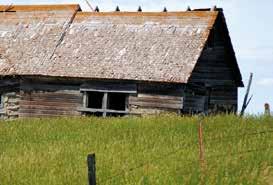
Third, places are complexes of meaning and relation on multiple scales. A particular place is internally complex because many people live in, use, or perceive a particular place. Because no two people have the same sense of place, sense of a place may be symphonic or cacophonous and probably both. At the same time, even the smallest, seemingly most isolated places are inescapably related to all other places. Consider the Roosevelt map of the United States, 1912: this cartoonish map features the United States, rotated right and thus running vertically on the page; superimposed on the map is the side view of Theodore Roosevelt’s head (North Dakota literally has the left ear of the former president; Texas, his nose; and Florida, his chin). While sipping tea imported from China, a resident of Milton, ND, could view this map and learn that her home is implicated in the processes of nation-building. The scale of multiple relations between places is always at work in every place, making individual places inextricable complexes of meaning.
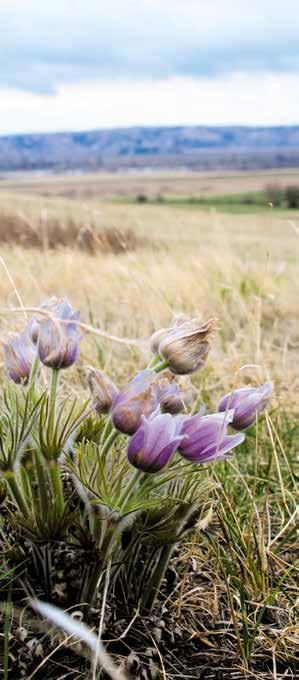
Fourth, places are fields of contestation. In the demarcation of a particular place, lines (literal or virtual) create boundaries allowing us to distinguish who or what is or is not a part of that particular place. Boundaries are sites of ongoing production and reification because new people, new ways of doing things, or new ideas threaten a trespass of boundaries; defenses are marshaled and a contestation for rights of inclusion or exclusion ensues. This practice, so central to the nature of place, invites moral scrutiny. For example, the reservation system for American Indians accomplishes far more than defining territory. These boundaries have moral significance relative to conditions of poverty, violence, and availability of opportunity in these places. The boundaries carry the history of colonial conquest, genocide, and oppression. The local sentiment of residents in the towns that border these reservations is often one of wariness: women should not go alone to reservations, white people should not travel through reservations at night, and so forth. The geographical boundary thus becomes functional in reifying racism. Changing just this one aspect of the sense of this particular place will require contestation, a meeting at the place where the line was drawn at the start, and an invocation of moral imagination to interrogate our practices of inclusion and exclusion relative to boundaries. Places are always constantly produced and reproduced and thus sites of ongoing contestation.
Finally, spaces, places, and people are mutually constitutive. The space-place relation must be acknowledged as more than the blank space of physical geography awaiting the inscription of meaning as a place. Physical geography exerts a force that is reciprocal as well as limiting. Physical spaces limit what places can become and even what places are possible. Human beings, in other words, do not just get to make a place whatever they want it to be. Prairies do not present the same possibilities as tropical rain forests. Residents of Bottineau, ND, do not find orange trees growing wild in their backyards. Space is not an empty void waiting to be filled: as a term referring to natural conditions such as topography and cosmology, space limits the possibilities of our place-making.
At the same time, space is constitutive of our sense of place. On the surface, North Dakota seems to be one of those geographical regions that people either love or hate. Lovers read the land as full, rich, expansive, textured, open. Haters experience the land as empty, barren, godforsaken, boring. The truth probably lies somewhere in the middle: the internal reading of this land as a sense of place is an interplay with the outer physical terrain where moments of intimacy and familiarity form links to attraction and allure while combining with moments crafted in the gap of alienation and fearfulness. The love for the vast plain quickly turns to sheer terror if one is stranded in a whiteout blizzard on a lonely stretch of highway at night. This space-place produces people wild to escape, some who never leave, and those who run like the dickens only to return.
At journey’s end I again pose the question, “What is your sense of place?” Wendell Berry mused, “If you don’t know where you are, you don’t know who you are.” Indeed, our lives are lived answers to this question. We are geographical beings, busily constructing places, trying to learn our place, longing for the experience of other places. Our lives are shaped by the places we find ourselves, and we in turn shape the places where we live. Recognizing this reciprocal relation and the many features of place-making might help us live more intentionally as “placed persons”: embracing our responsibility for the places we construct, asking “how” when facing change, realizing the global relation present in the complex of every place, and enacting a moral vision wise enough to discern which contests of inclusion/exclusion serve life and well-being from those that do not.
Jay Basquiat is an agrarian and organic farmer in Mandan, ND. He operates a Community Supported Agriculture (CSA) venture called Baskets of Plenty and teaches philosophy at Bismarck State College, hopefully serving love–and practice–of wisdom on the northern plains.

